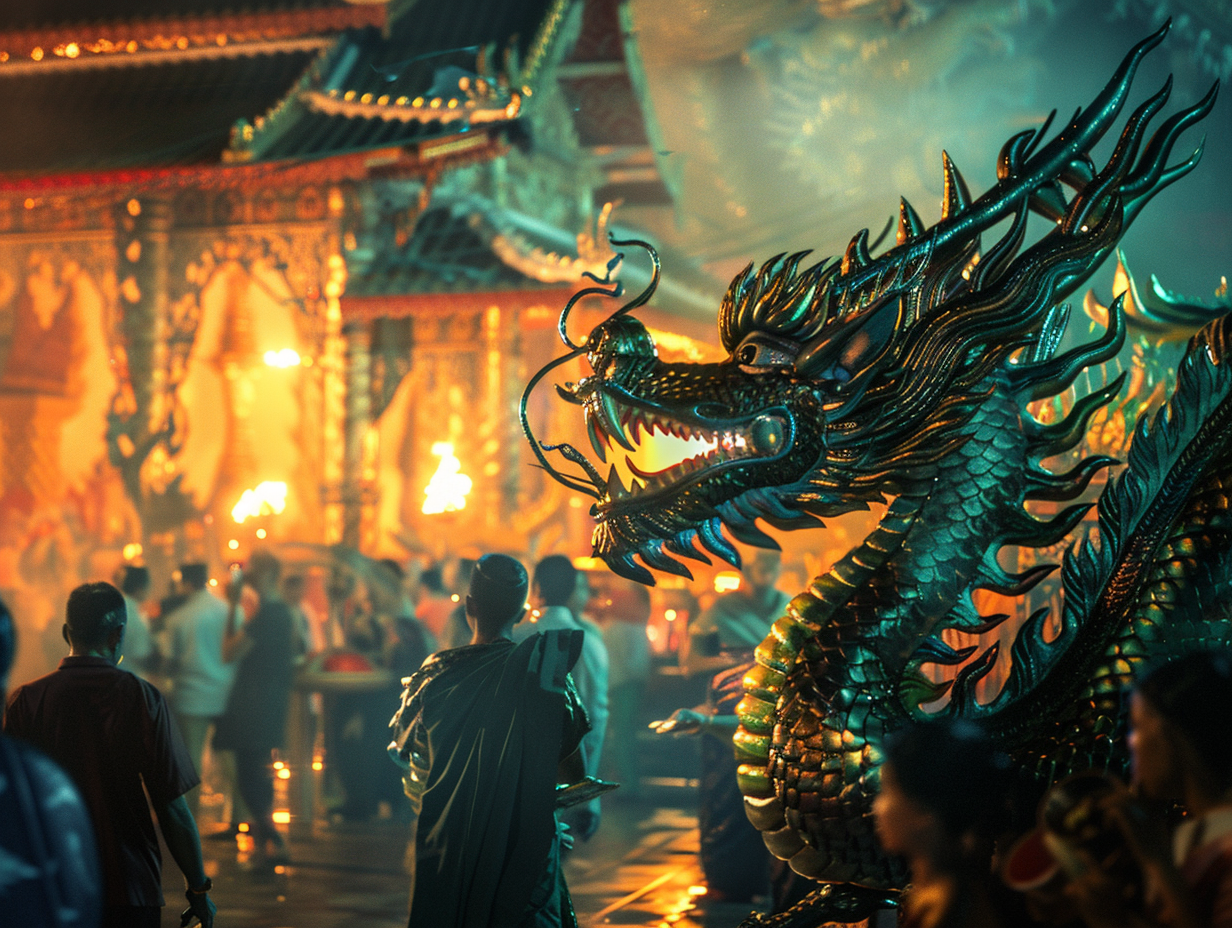Celebrating Khmer New Year: A Journey Through Cambodia's Most Festive Season
Immerse in Cambodia's Khmer New Year, "Choul Chnam Thmey," a vibrant celebration from April 13-15. Witness rituals, traditional games, and dances that unite the spirit of renewal and community. Enjoy the festive air filled with music, laughter, and cultural pride.

Introduction
Khmer New Year, known as "Choul Chnam Thmey" in the Khmer language, which translates to "Enter New Year," is Cambodia's most eagerly anticipated holiday. This festive event marks the end of the harvesting season, giving farmers a break from their agricultural labors and a chance to celebrate their hard work. It usually takes place from April 13th to 15th, aligning with the end of the solar year and the onset of the rainy season. Let's dive into the colorful, vibrant celebrations that encapsulate the spirit of Khmer culture and herald the beginning of a new year.

The Three Days of Celebration
Day One: Maha Songkran
- Significance: Maha Songkran is the first day of the New Year celebration and is considered the "Day of Cleansing." It involves various symbolic actions meant to wash away the sins and bad luck of the past year.
- Traditions:
- Cleaning Rituals: Homes are thoroughly cleaned. People also wash their faces with holy water in the morning, their chests at noon, and their feet in the evening to cleanse their bodies of sins.
- Offerings: Cambodians dress up in bright, festive clothing and visit local temples offering food and incense to the Buddha statues.
Day Two: Wanabot
- Significance: This is the "Day of Offering." It is dedicated to charitable acts and honoring the elderly and their ancestors.
- Traditions:
- Charity: Families contribute donations to the less fortunate, reflecting on the virtues of generosity and kindness.
- Respect for Elders: Young people perform water blessings and wash their elders' feet, asking for forgiveness for past wrongs and seeking blessings for the coming year.
Day Three: Leang Saka
- Significance: The final day is known as the "Day of New Beginnings". This day focuses on setting intentions for the New Year and starting afresh with positivity.
- Traditions:
- Buddha Statues: People go to temples to wash Buddha statues with scented water, which is believed to bring longevity, good luck, and happiness.
- Sand Mounds: In a unique tradition, worshippers form small sand mounds, which are then decorated to promote prosperity and health for their families.

The Fun and Festivities
Khmer New Year is not only about rituals and religious devotion but also a time of immense joy and celebration. Here's a peek at some of the festive activities:
Traditional Games
- Tug-of-war (Teanh Prot): A fun game that pits men against women in a friendly match of strength and teamwork.
- Bos Angkunh: An intriguing game played with 'angkunh' seeds, requiring skill and talent, traditionally reflecting agricultural themes.
Dance and Music
- Romvong Dance: Locals gather in large and small circles to participate in the traditional Khmer circle dance, moving slowly and gracefully in sync with classical Khmer music.
- Folk Music: The air is filled with the sound of traditional music, played using native instruments like the 'chapei' (a type of stringed instrument).
Culinary Delights
- Special Dishes: No festival is complete without food, and Khmer New Year is no exception. Households prepare special meals that often include dishes like 'kralan'—a cake made from sticky rice, beans, and coconut milk roasted in bamboo segments.
- Sweet Treats: Mangoes with sticky rice, coconut milk, and various traditional Khmer sweets are savored, providing a delicious end to the festivities.

Symbolism and Reflection
Renewal and Purification
Each activity and ritual performed during the Khmer New Year is imbued with deep meaning. Cleaning homes and bodies symbolizes the desire to cleanse oneself of the past year's misfortunes and sins, starting the New Year with a clean slate.
Social Harmony
The holiday is also a time for community interaction and social bonding. Through games, dances, and shared meals, Cambodians reconnect with family and friends, strengthening community ties and reinforcing social values.
Cultural Identity
In a rapidly globalizing world, festivals like Khmer New Year are vital in preserving and celebrating Khmer cultural identity. It is a time when young and old alike can reconnect with ancient traditions, ensuring they are passed down through generations.

Conclusion
Khmer New Year is a beautiful amalgamation of culture, religion, and community spirit. For three days, the entire country transforms into a vibrant tableau of joyous celebrations, age-old traditions, and heartfelt practices. Whether participating in the cleansing rituals, engaging in traditional games, or simply enjoying the company.
